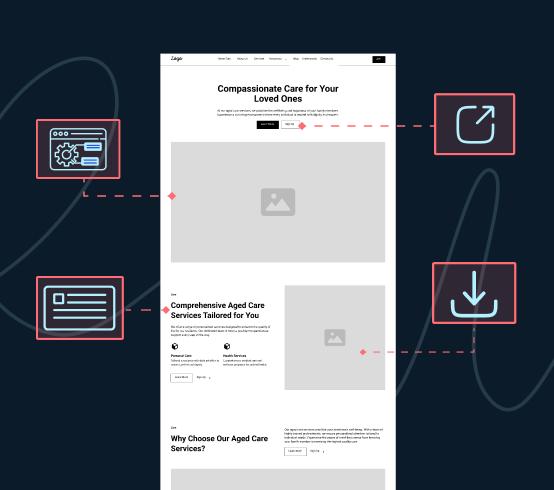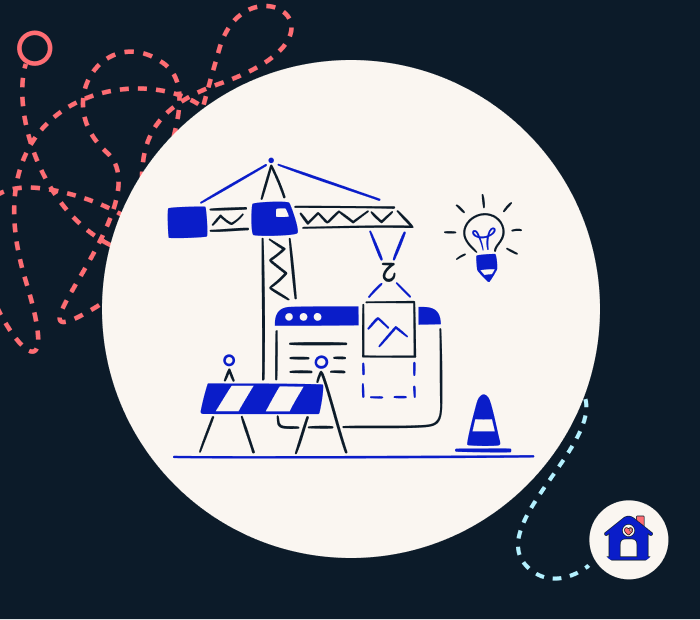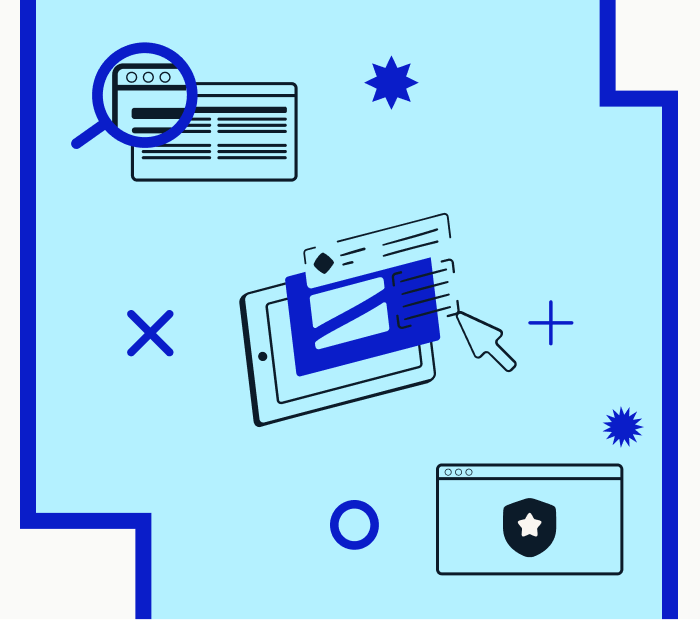
What is Website Development?
Website development involves creating and managing websites. It includes tasks like web design, web development, database administration and user experience design. There are two types of website development: front-end and back-end.
Front-end development focuses on the visual features of a website, such as layout, colours, typography, and user interface. To create an attractive and user-friendly website, developers use coding languages like HTML, CSS, and JavaScript.
Back-end development handles the server-side logic, databases and infrastructure that power a website’s functionality. Back-end developers use programming languages like PHP, Python, Ruby, or Java to store and manage data. They also use database management systems like MySQL or MongoDB to handle data.
Importance of Understanding the Web Development Process
By investing time and effort to learn about web development, you can create a more effective website that aligns with your business objectives and stay ahead of the competition. Here are some of the importance of understanding the process of web development:
Clear Communication and Expectations
Understanding the website development process helps you communicate more effectively with developers, set realistic expectations, and avoid misunderstandings or miscommunications.
Efficient Project Management
Knowing the steps involved in web development allows you to plan better, manage, and distribute resources, ensuring that projects run smoothly and can be completed within the set deadlines.
Informed Decision-Making
Understanding the process enables you to make healthy decisions regarding the choice of technology, design elements, and features that can lead you to a more successful website.
Better Collaboration
Constant maintenance and upgrades are required to maintain the website safe, up-to-date, and in line with changing requirements. This includes frequent monitoring, backups, software and plugin updates, security checking, adding new material, and optimising speed. Maintenance ensures that the website works properly and that users have a great experience.
Cost and Time Savings
You can avoid costly or time-consuming issues in the future by recognising possible problems or concerns early on.
Optimised User Experience
A deeper grasp of the web design process allows you to prioritise user experience and design components, ensuring that your website fits your target audience's demands and offers visitors a satisfying experience.
Adaptability and Scalability
Understanding the web development process allows you to plan for future growth and adaptability. This can help you scale your website as your business or user base grows.
Website Development Process: Step-by-Step Guide
A website requires a lot of effort, preparation, and commitment. This step-by-step guide will show you how to build a stunning website and guarantee its success.
Data Gathering
Developers can build a website that meets users' needs by conducting thorough research and gathering data. Data-gathering ensures that website development teams deliver websites with the necessary features and functionalities, are user-friendly and reliable, and achieve their intended goals.
Planning
Planning is a critical aspect of website development. By defining website goals, identifying a target audience, developing content, designing and navigating the website, and testing before launch, you can create a website that meets the intended purpose and engages visitors. Proper planning ensures that the website development process is efficient and effective, meeting the website's and its users' needs.
Design
During a website's design phase, the designer focuses on developing the website layout, presented as a graphic sketch or an actual design. The layout visualises the content, demonstrates basic functionality, and incorporates colours, logos, and images to give a general understanding of the final product. The client's feedback is sought, and revisions are made until they're satisfied with the design, often with the help of UI/UX designers to speed up the process and reach the finest result.
Development
During the development phase, the website design is built, and graphic components are added to create real web pages. The main page is constructed first, followed by sub-pages based on the established structure. Chosen frameworks and content management systems are included to ensure smooth server installation and setup. Static pieces are evaluated before adding more dynamic features and interactivity. Expertise in web development technology, such as coding, and debugging, is vital at this stage. CMS plugins and SEO are also implemented if needed. Proper coding standards are emphasised for compliance with SEO requirements.
Testing
When it comes to outsourcing web development, the developer will handle most of the testing during the testing phase. However, you must ensure the website aligns with your vision and business goals. Don't rush launching it if it's not up to your standards. Check the forms' functionality and review the content and design for errors. Before making the website live, follow a pre-launch checklist to ensure all preparations are in place.
Launch
After receiving final approval from the client, the website undergoes a final check to ensure all files are uploaded safely and correctly so that the site functions smoothly. Domain name DNS records are also part of this phase.
Maintenance
Once the website is up, it will require maintenance and security and vulnerability audits. Minor edits may be required as the website updates, which is generally done with a website support package. Additional web development / design requirements will result in another project.
Benefits of Working with a Web Development Agency
Working with a web development agency can provide several benefits to businesses looking to improve their online presence.
Professional Expertise
One of the primary benefits of hiring a web development agency is having access to a team of qualified professionals with diverse skills in many website design and development areas. With a team of developers, designers, and digital marketing strategists, these agencies can ensure your website is built with the newest technology in mind and optimised for search engines.
Customised Web Design
A web development agency can create a customised website specifically for your business. They make sure the website is both visually appealing and easy to use. They analyse user behaviour and create engaging interfaces to optimise the user experience.
Time and Cost Efficient
Web development agencies have ways to work efficiently and on time. They have the resources, skills, and knowledge to build websites. This will save you time and effort. Hiring a company to outsource web development can also save you the cost of hiring an additional expert or training your in-house team.
Access to the Latest Technologies
Agencies used to stay updated with the latest trends and technology. They can use complex tools, frameworks, and plugins to enhance your website's functionality and speed. With these technologies, agencies can create unique and current websites that offer users a better experience.
Investment in Long-Term Success
Investing in a web development agency is investing in long-term success for your business. A professional website can boost your digital marketing, attract more leads and increase search engine rankings. A well-designed website can also impress visitors and increase their likelihood of becoming customers.
Ongoing Support and Maintenance
Web development agencies also offer maintenance and support services for websites. They handle updates and security patches to keep your website safe and functioning smoothly. Maintenance includes monitoring website performance, conducting backups, and implementing necessary updates. This ensures your website remains secure and runs optimally.
Let Butterfly Guide You Through the Website Development Process
As a reliable web development agency in Melbourne, Butterfly can provide your desired website through our tested website development process. Our process is designed to ensure clear communication, efficient project management, and exceptional results. From the initial data gathering and meticulous planning to the captivating design, precise development, rigorous testing, and smooth launch, we have you covered. Let Butterfly be your guide, leading you through the intricacies of website development with precision and expertise. Call us now on 03 9009 9601.
Web Development Process FAQs
What is the typical timeline for website development?
Every phase in website development has its own estimated time to be accomplished.
- Data gathering – 1 to 2 weeks
- Planning stage – 2 to 6 weeks
- Design phase – 4 to 12 weeks
- Development stage, including content and coding phase – 5 to 15 weeks
- Testing phase – 2 to 4 weeks
- Launching – 1 day to 2 weeks
- Maintenance – ongoing
How much does website development cost?
The cost of website development depends on several factors, such as its type, required features, web development company, and its maintenance and upgrades. A brochure website ranges from $10,000 – $20,000, larger websites including e Commerce websites can range from $30,000 – $50,000, bespoke websites with custom functionality can start from $100,000+.
How do I choose a web development agency?
Before hiring a web development agency or any type of developer, make sure to do following:
- Check their portfolio and experience
- Consider their team and communication skills
- Look for reviews and references
- Check their technical capabilities
- Evaluate their pricing and timeline
What is the difference between web design and web development?
Web design deals with the visual aspects and user experience. Web designers use graphic design software and specialise in typography, colour theory and UI design principles. They provide wireframes, mockups and design files as outputs.
Web development is all about technical implementation and functionality. Web developers use programming languages and web technologies to convert design files into functional websites. Their responsibilities comprise coding, scripting, database integration, and ensuring cross-device and cross-browser compatibility. Web development produces the actual website files, codebase, and databases that make the design interactive and functional.




